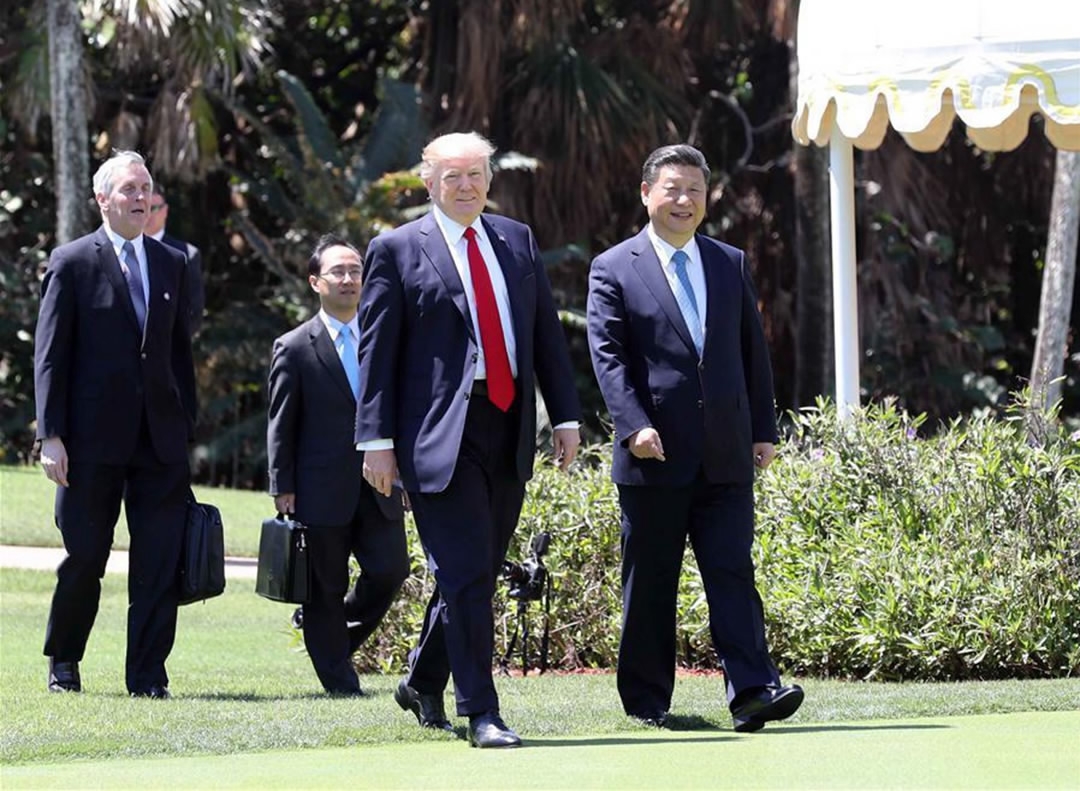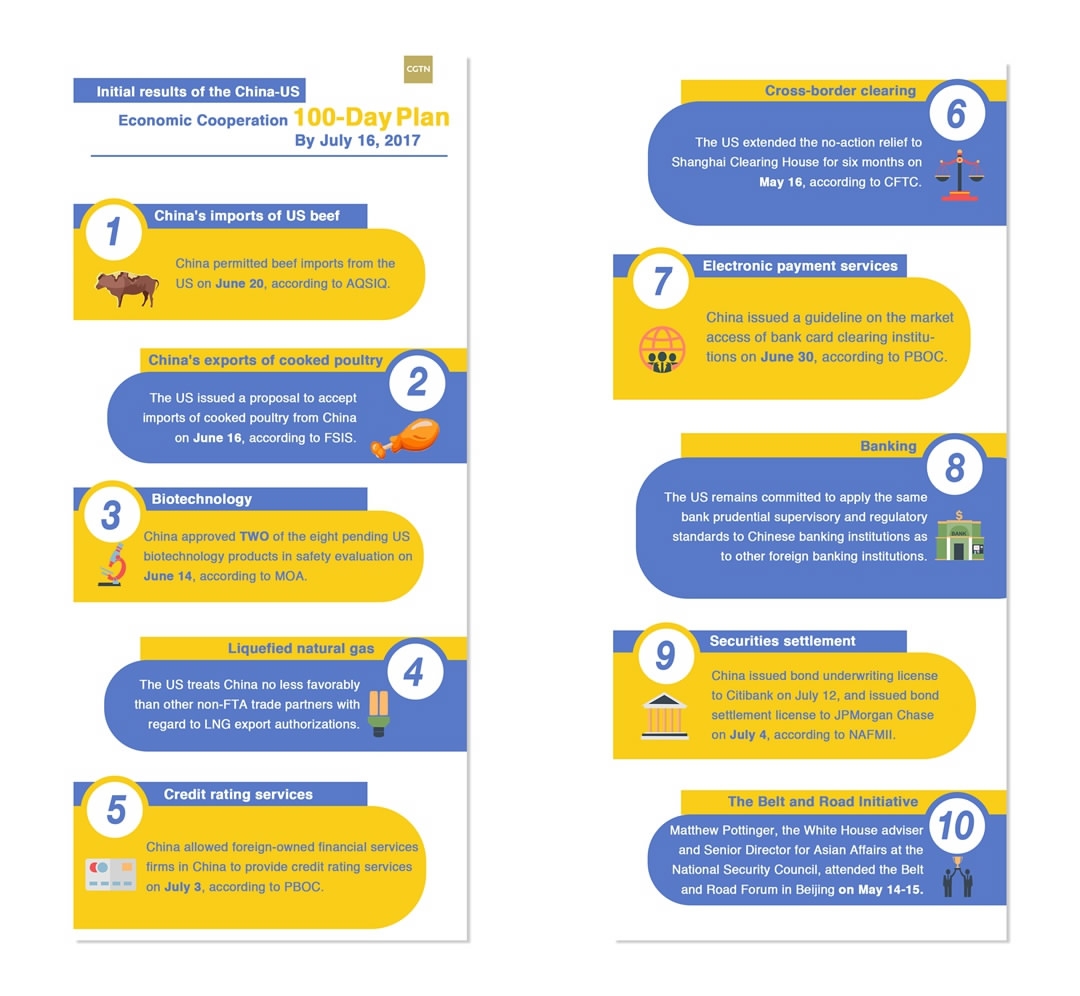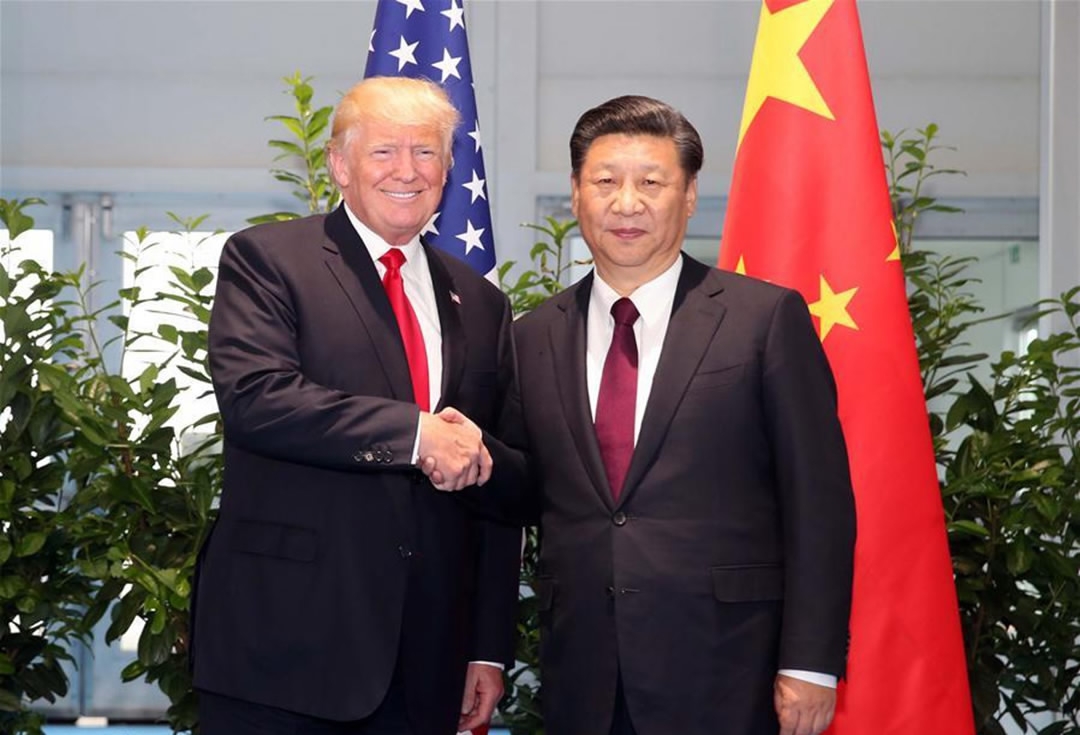As the 100-day trade talks between China and the US close today, the world's two largest economies will build on initial results and extend their economic cooperation by a year in a forthcoming comprehensive economic dialogue (CED).
The CED is one of the four high-level dialogue mechanisms initiated after the first meeting between Chinese President Xi Jinping and US President Donald Trump this April at Mar-a-Lago, where the 100-day economic cooperation plan was also initiated.

Chinese President Xi Jinping (R, Front) and his US counterpart Donald Trump (L, Front) take a walk in the Mar-a-Lago resort in Florida, US on April 7, 2017. /Xinhua Photo
The first round of the CED, led by Chinese Vice Premier Wang Yang, US Treasury Secretary Steven Mnuchin and Commerce Secretary Wilbur Ross, will kick off on Wednesday in Washington, DC, according to Geng Shuang, a spokesman for Chinese Ministry of Foreign Affairs.
It will sum up initial results of the 100-day plan and discuss what lies ahead for the one-year plan, said Gao Feng, a spokesman for Chinese Ministry of Commerce (MOFCOM).
Initial results of the 100-day plan

The 100-day plan's initial actions, released in mid-May, have been completed as of today. The 10 initial results cover five sectors, namely agricultural products, energy, financial services, investment, and people-to-people exchanges between the two countries.
For example, in terms of agricultural products, China permitted conditional beef imports from the US on June 20, according to Chinese Administration of Quality Supervision, Inspection and Quarantine. It is buying US beef again after a 14-year ban.
From the US side, the country issued a proposal to accept imports of cooked poultry from China on June 16, according to the US Department of Agriculture's Food Safety and Inspection Service, though comments on the proposal are due on August 15.
China has also actively increased imports of some US products to ease the US trade deficit with the country. The US trade surplus with China in the fields of crude oil, cotton, soybeans and wheat have risen substantially, according to the MOFCOM.
"Deals such as the soybeans definitely create favorable conditions for negotiations," said Gai Xinzhe, an analyst at Bank of China’s Institute of International Finance in Beijing.
"Trump is a businessman and loves making deals. These will give Trump something he can announce at home. But ultimately it’ll take a very long time to resolve the trade imbalance," Gai noted.
What next for the one-year plan?

Chinese President Xi Jinping (R) meets with his US counterpart Donald Trump on the sidelines of the G20 Summit in Hamburg, Germany on July 8, 2017. /Xinhua Photo
The consensus on developing a new one-year economic cooperation plan was reached by both countries' leaders in their second meeting on the sidelines of the G20 Summit in Hamburg earlier this month.
The one-year plan will likely include more goods and services than the initial 100-day version, possibly in the areas of aviation and aerospace, automobiles, chemicals and other high-tech products in which the US has an absolute advantage, said Liang Ming, a researcher from the Chinese Academy of International Trade and Economic Cooperation, MOFCOM.
With regard to services, apart from further opening up of the financial market, China is expected to expand imports of services like transportation, consulting, patents and films, said Liang. The country will be more open in the aspects of accounting, advertising and law, said Wang Hanfeng, an analyst at China International Capital Corporation in Shanghai.
To ensure "successful outcomes", the US will probably have to make some concessions on China's market economy status, the US control of exports to China, as well as China's access to US infrastructure construction, Liang noted.
Related stories:









